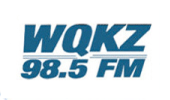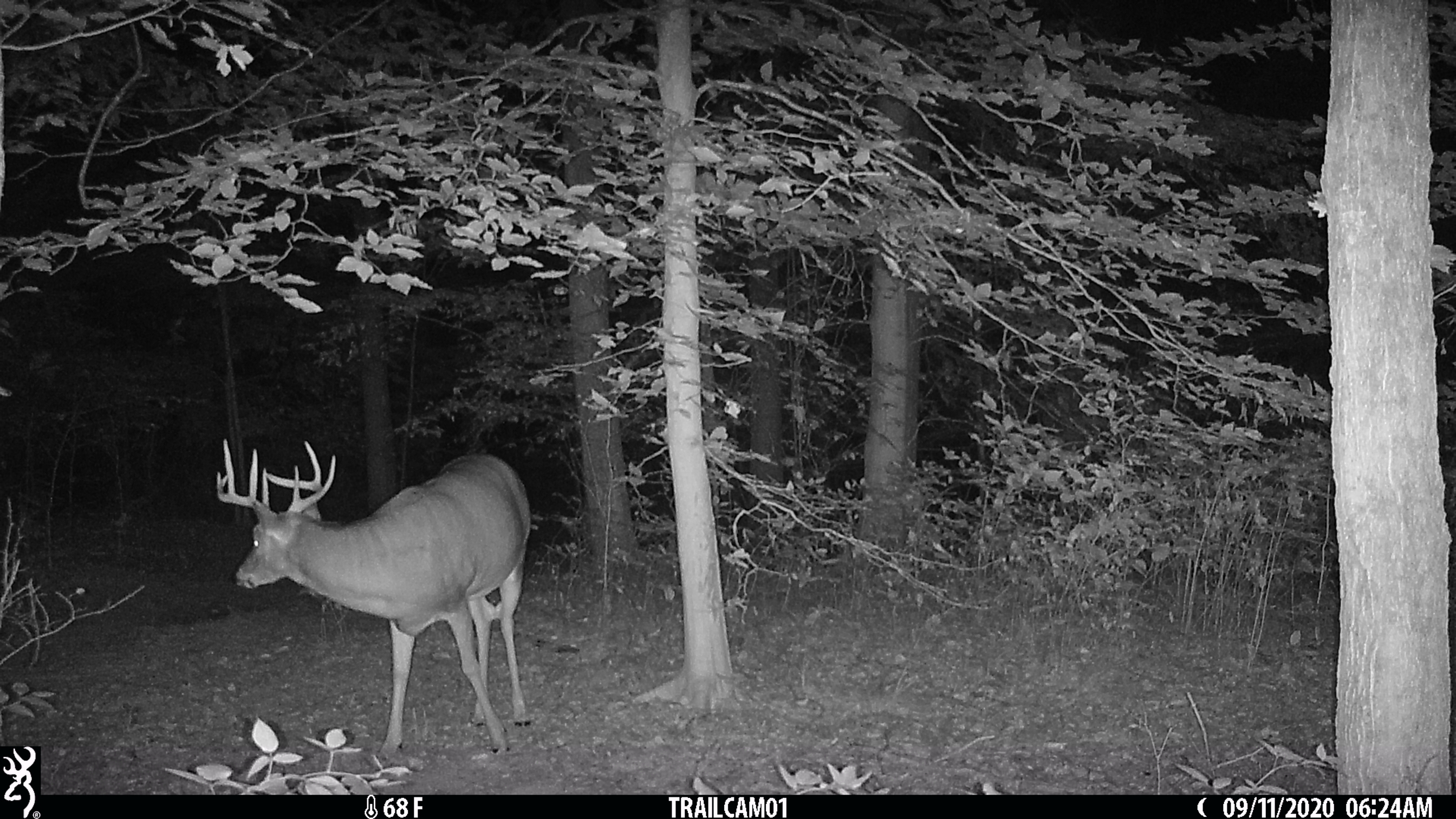Patoka Sportsman 10-10-20
Patoka Sportsman 10-10 & 10-11-20
Patoka Lake is hosting Autumn Getaway Weekends on October 16-17 within the framework of the State’s guidance for event planning, including social distancing, mask requirements, hand-washing and sanitizing of program materials this year. Events include campsite decorating contest, pumpkin decorating and carving contests, tie dye t-shirt craft (please bring your own 100% cotton shirt), pet parade and costume contests, zombie hunt, pumpkins and carving tools for purchase, trick-or-treat, and educational programs. This year, however, because of COVID-19, if trick-or-treating occurs at park properties, it will be only for campers. All celebrations will incorporate safety guidelines developed in conjunction with the State’s COVID-19 Executive Orders and Back on Track Plan. Check the DNR calendar for great outdoor programs for everyone at calendar.dnr.IN.gov. Check for campsite or park-managed cabin availability at camp.IN.gov or call 866-622-6746 or find available state park inn rooms or inn-managed cabins at indianainns.com or 1-877-LODGES1.
State Park Deer management draw dates are November 16-17 for the early hunt and November 30-December 1, 2020 for the late hunt. Applicants must possess any valid license to take a deer in Indiana at the time of the application, not including apprentice licenses. Applicants must be Indiana residents (or possess a valid lifetime comprehensive hunting license to take deer in Indiana), be 18 years of age by the date of the first hunt, and must possess the proper licenses to hunt deer in order to apply. Once you have submitted your application online, you cannot change your information.
For successful applicants, deer harvested at a State Park Management Hunt are in addition to regular deer-season bag limits. You do not need to purchase additional licenses to harvest deer if participating in the management hunt. For questions regarding State Park Deer Management Hunts, please contact DNR's Division of State Parks at 317-232-4200.
Available state parks locally in 2020 include Brown County State Park, Harmonie State Park, Lincoln State Park, McCormick's Creek State Park and Spring Mill State Park.
If you hunt in more than one season, this is the license deal for you! A deer bundle license can be used in all seasons (except the deer reduction zone season) using legal equipment during that season and gives the hunter the privilege to harvest up to three deer (3 antlerless OR 1 antlered and 2 antlerless deer). Season dates, legal equipment, and all other deer hunting laws apply. Antlerless deer taken with a deer license bundle can count toward the archery season bag limit, muzzleloader season bag limit, or as a bonus antlerless deer in that county, depending on the season and equipment used.
Signing in to buy hunting, fishing, and trapping licenses looks a little different now. A new state online portal called Access Indiana, which allows citizens to interact with multiple Indiana state agencies through a single login, has launched. If you haven’t already purchased your hunting license for this fall, we suggest creating your Access Indiana account today.
Find instructions for getting started online. For additional assistance with a username or password, call 800-457-8283 for Access Indiana customer support. The DNR is unable to assist with usernames and passwords. More information about the Access Indiana portal, answers to FAQs, and other helpful information is available online.
If you buy your license at a store near you, don’t wait in long lines at your license retailer the day before the season starts - buy now. Find a list of license retailers online. Check your license for accuracy before you leave the store.
Find more information about deer licenses, seasons, and regulations on our website. Remember, the resident youth consolidated hunt/trap license includes all deer hunting privileges.
The Indiana CheckIN Game system allows hunters and trappers to check in their harvested game from any device connected to the internet. You will receive a confirmation number that must be written down on a temporary transportation tag for the harvested game species (turkey, deer). Be sure to check your information to ensure accuracy before submitting. Deer and wild turkeys must be checked in within 48 hours of harvest; river otters must be checked in within 24 hours of harvest. Have your Customer ID and harvest information ready.
Remember, you don’t need to log in to your account to check in game for this fall – you can do so by clicking Game CheckIN and entering your Customer ID number and date of birth.
Please do not re-enter the correct information if you have entered incorrect information into the CheckIN Game system because each submission registers as a harvested animal. Email your confirmation number, name, and changes that need to be made to [email protected].
To view all game that was previously checked in with the CheckIN Game system, you will need to set up an account through our online system. You can purchase licenses, check in game, complete your HIP registration, and make a donation through your account.
Hunters still have the option of visiting traditional check stations where a confirmation number will be provided to hunters to place on their temporary transportation tag. There is also a phone-in option at 1-800-419-1326; however, there is a $3 charge for this service (Visa or MasterCard only).
Due to the COVID-19 pandemic, some Indiana deer processors may have adjusted hours, may not be taking full carcasses, or may not be taking deer at all this fall. Indiana DNR recommends you plan ahead and contact your processor before taking a deer to them. For the do-it-yourselfer, videos about skinning, butchering, and preparing your meat are available at deer.dnr.IN.gov under Field to Freezer: Meat Preparation. Remember to wear gloves, wash your hands after processing, and clean and disinfect your instruments after use.
Mourning dove season will close on Oct. 18. Dog running season for raccoon and opossum will close on Oct. 25. If you’re hunting from a tree stand, remember to use a safety harness to prevent falls. For more information on bag limits and quotas, check out the Indiana Hunting & Trapping Guide. Indiana Conservation Officers are offering safety tips to help keep Hoosier deer hunters safe. The various deer hunting seasons run through Jan. 31, 2021. It is estimated that more than 300,000 people will participate in some form of deer hunting in Indiana during that span. Such a large number makes safety more even more important.
Wild turkey fall archery season runs from Oct. 1 – Nov. 1. Wild turkey fall firearms season is from Oct. 21. – Nov. 1. Deer Archery season runs now through Jan. 3. Red and gray fox season runs from Oct. 15 – Feb. 28, 2021. Coyote and striped skunk season is Oct. 15. – Mar. 15.
The most common injuries during deer seasons are accidents involving tree stands and elevated platforms. Follow the safety tips listed below when hunting from an elevated position:
Before the hunt:
- Read and understand the tree stand manufacturer’s instructions.
- Check tree stands and equipment for wear, fatigue, and cracks or loose nuts/bolts, paying particularly close attention to parts made of material other than metal.
- Practice at ground level.
- Learn how to properly wear your full-body safety harness.
During the hunt:
- Wear your full-body safety harness.
- Use a tree stand safety rope.
- Make certain to attach your harness to the tree before leaving the ground, and that it remains attached to the tree until you return to the ground.
- Maintain three points of contact during ascent and descent.
- Use boots with non-slip soles to avoid slipping.
- Use a haul line to raise and lower firearms, bows and other hunting gear.
- Make certain firearms are unloaded, action open and safety on before attaching the haul line.
Additional safety tips:
- Carry emergency equipment, such as a cell phone and flashlight.
- Make a plan before you hunt.
- Tell someone your plan, including where you will be hunting and when you plan to return.
- Stick to your plan.
- Identify game before pointing a firearm.
- Know your target and what is beyond it.
For more information, see hunting.IN.gov.
Youth free hunting days are November 28-29. Any resident age 17 or younger on the date of the hunt can take any legal game in season during these youth free hunting days. To participate, the youth must be accompanied by an adult who is at least 18 years of age. The youth hunter does not have to possess a hunting license but must comply with all other hunting regulations.
The DNR would like to remind everyone to be aware of their surroundings. Hunters are not required to wear hunter orange until firearms season in November, and could be hard to spot. If you see a bowhunter, give them space to ensure that everyone has an opportunity to enjoy the outdoors. Consider wearing hunter orange when entering areas where hunters are present, especially when venturing off-trail. Please note that state parks only allow deer hunting on certain reserved draw dates. Other DNR properties, like state forests and fish & wildlife areas, allow hunting throughout the seasons.Questions about deer seasons and regulations can be directed to the Deer Hotline at [email protected] or call 812-334-3795, 8:30 a.m. to 4 p.m. ET, Monday through Friday.
Deer-vehicle accidents can be minimized by practicing good defensive driving skills.
Staying aware and keeping the following information in mind can help motorists reduce their chances of becoming another deer-vehicle collision statistic:
- Deer are most active at dawn and dusk.
- Deer often travel in groups. If you see one deer, another is likely nearby.
- Be especially careful in areas where you have seen deer before.
- Use high beams when there is no opposing traffic. Scan for deer’s illuminated eyes or dark silhouettes along the side of the road.
- If you see a deer, slow your speed drastically, even if it is far away.
- Exercise extreme caution along wooded edges, at hills, and during blind turns.
- Never swerve to avoid hitting a deer. Most serious crashes occur when drivers try to miss a deer, but hit something else.
Statistics about deer-vehicle collisions in Indiana are available in the 2019 Indiana Deer Report.
You can help the DNR track wildlife health over time and detect potential disease outbreaks through a new reporting system. Individuals are encouraged to report fish or wildlife displaying odd behavior or signs of disease. They are especially interested in incidents involving the death of five or more animals, recurring deaths of animals in the same location over a period of time, deer exhibiting signs that may indicate chronic wasting disease or epizootic hemorrhagic disease, or incidents involving threatened or endangered species.
Looking to enjoy the fall weather? Most recreational activities are available at all Fish & Wildlife Areas. While visiting, make sure you’re doing your part to keep properties healthy, beautiful, and safe. Remember to carry out your trash and enjoy the outdoors safely by parking only in designated areas and driving 30 mph or less.
Be sure to prepare for your visit and know where you’re going. Hunters are not required to wear hunter orange until firearms season in November, and could be hard to spot. If you see a bowhunter, give them space to ensure that everyone has an opportunity to enjoy the outdoors. Consider wearing hunter orange when entering areas where hunters are present, especially when venturing off-trail.
Please note that state parks only allow deer hunting on certain reserved draw dates. Other DNR properties, like state forests and fish & wildlife areas, allow hunting throughout the seasons.
As temperatures drop, most Hoosiers hunker down to stay warm, and native bats are preparing to do the same. Big brown bats may use buildings for hibernation, causing homeowners to search for solutions to evict their unwelcome guests.
Bat removal takes finesse. Ideally, temperatures should be above 50-60°F for five consecutive nights without high winds or precipitation. August through October is the best time to remove bats. In winter and early spring (November – April), most of Indiana’s bat species are hibernating and should NOT be removed at this time. In the summer (June – August), bats are rearing pups and should NOT be evicted to prevent trapping juveniles.
Using one-way, funnel-shaped exclusion devices to evict bats is the most efficient method of removing and preventing bats from roosting in structures. These devices allow bats to exit but not enter a building. Once it is clear and bats are not entering elsewhere, the bat entrance(s) can be repaired. A variety of materials can be used, making it easy to find a solution that works best for your home.
For immediate assistance with injured bats, please contact a licensed wildlife rehabilitator. If you need help figuring out bat-proofing solutions for your home, consider contacting your district wildlife biologist.
Moriah Boggess is the Indiana DNR’s newest Deer Biologist. A native of North Carolina, Moriah received his BS in Fisheries, Wildlife, and Conservation Biology from North Carolina State University and his MS in Fisheries, Wildlife, and Aquaculture through the Deer Ecology and Management Lab at Mississippi State University. His master’s thesis examined the effects of prescribed fire and deer on acorn survival and plant communities. Moriah’s professional work experience is diverse. It includes research and extension positions on warm season grass management, waterfowl banding, Bachman’s sparrows, impacts of trail construction on wildlife, and various aspects of deer ecology. He was the social media manager for the MSU Deer Lab during his master’s research, and for the past three months, he was a habitat technician for Purdue University’s Integrated Deer Management project.
He also has a strong appreciation for outreach, education, and communication. He is a frequent contributor to the Quality Deer Management Association and Quality Whitetails and also co-founded “Hunt The Land”, a website, blog, and podcast on habitat management, bowhunting, and white-tailed deer. His office will be at the Indiana DNR Division of Fish & Wildlife Office of Science and Research at the Bloomington Field Office.
Bloomington Field Office
5596 East State Road 46
Bloomington, IN 47401
Office Phone Number - 812-287-8307
Email – [email protected]




